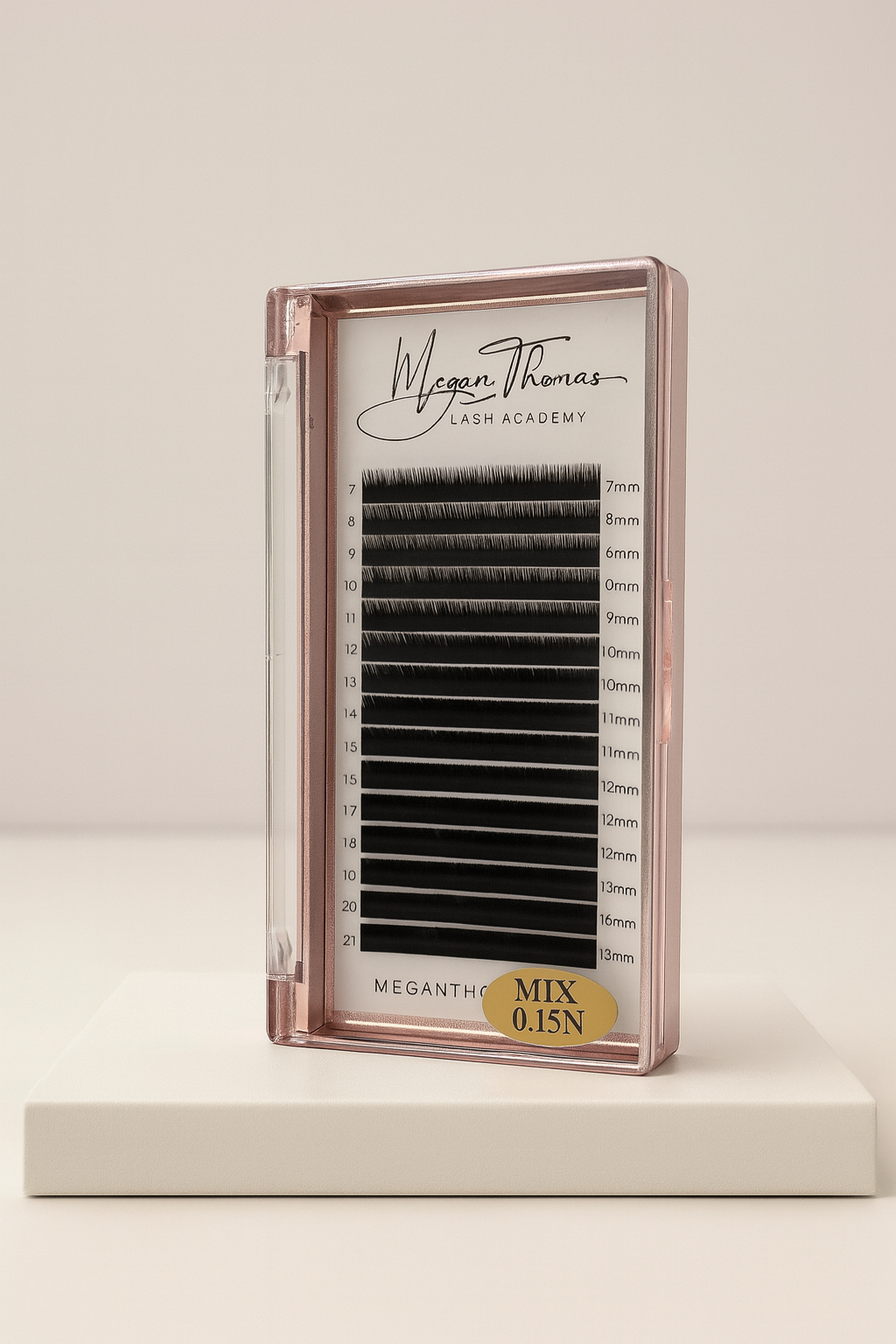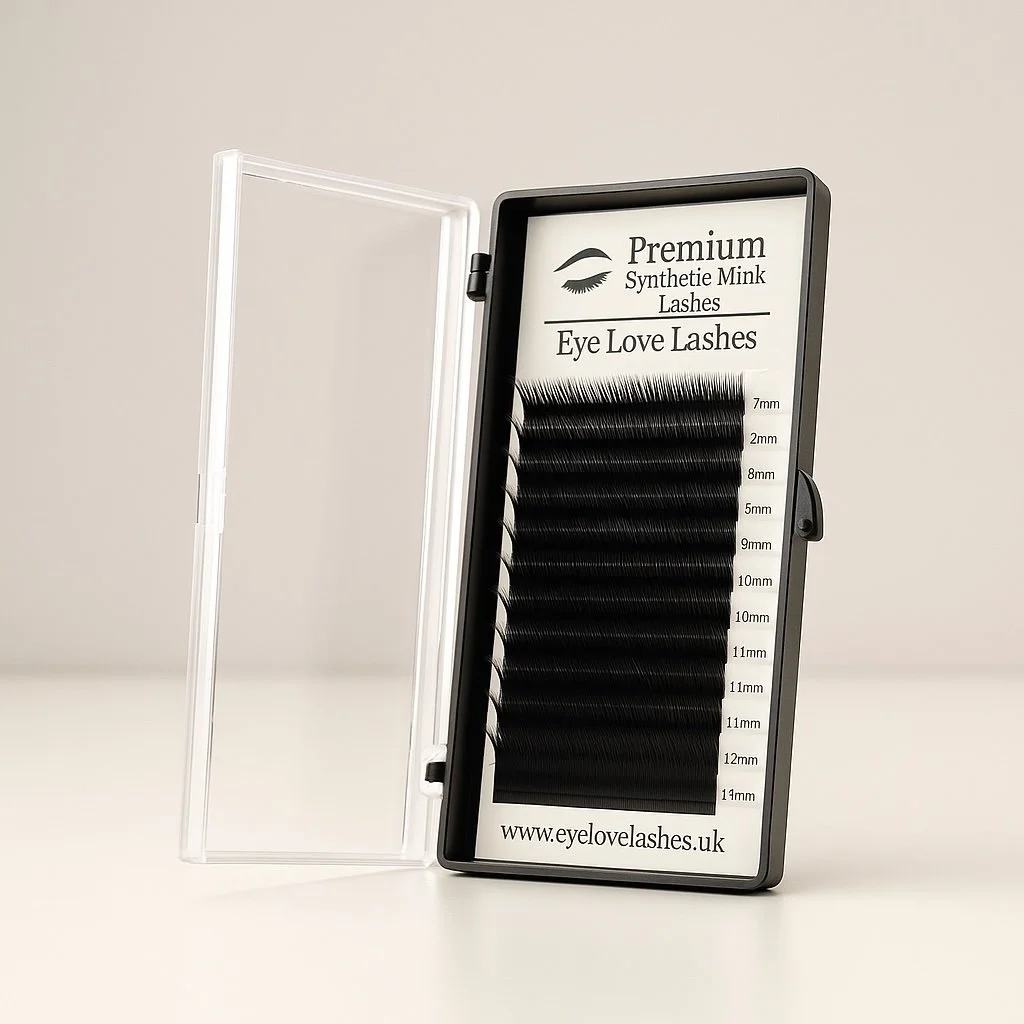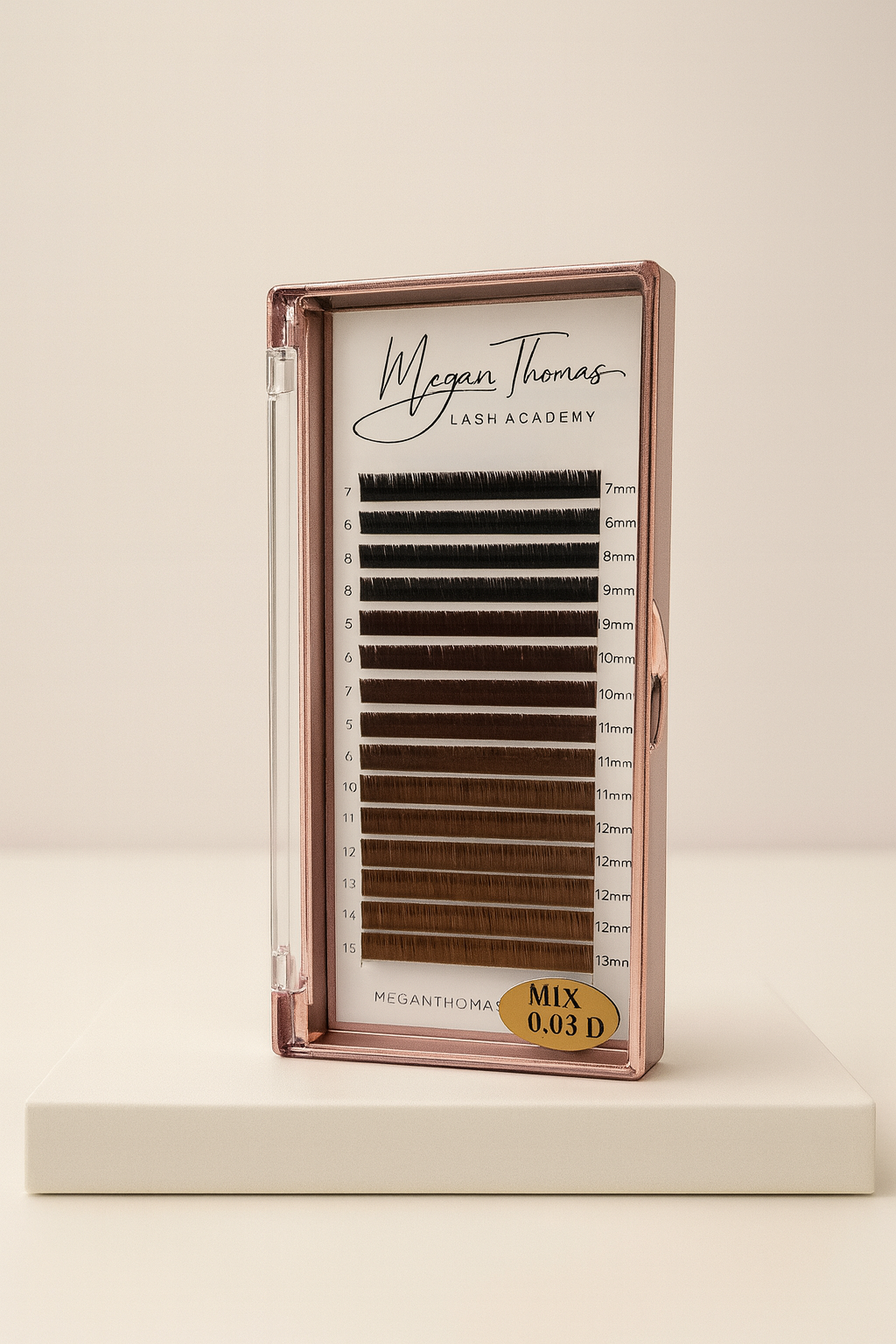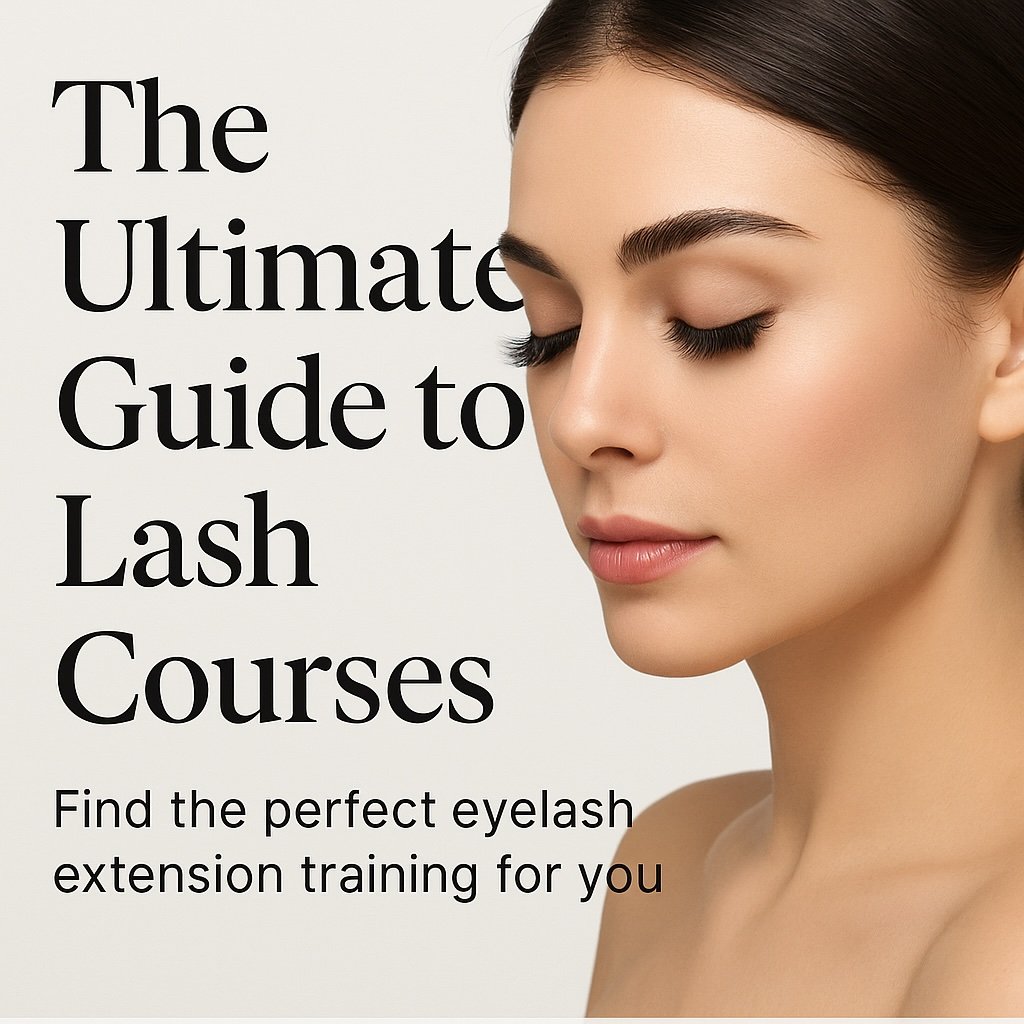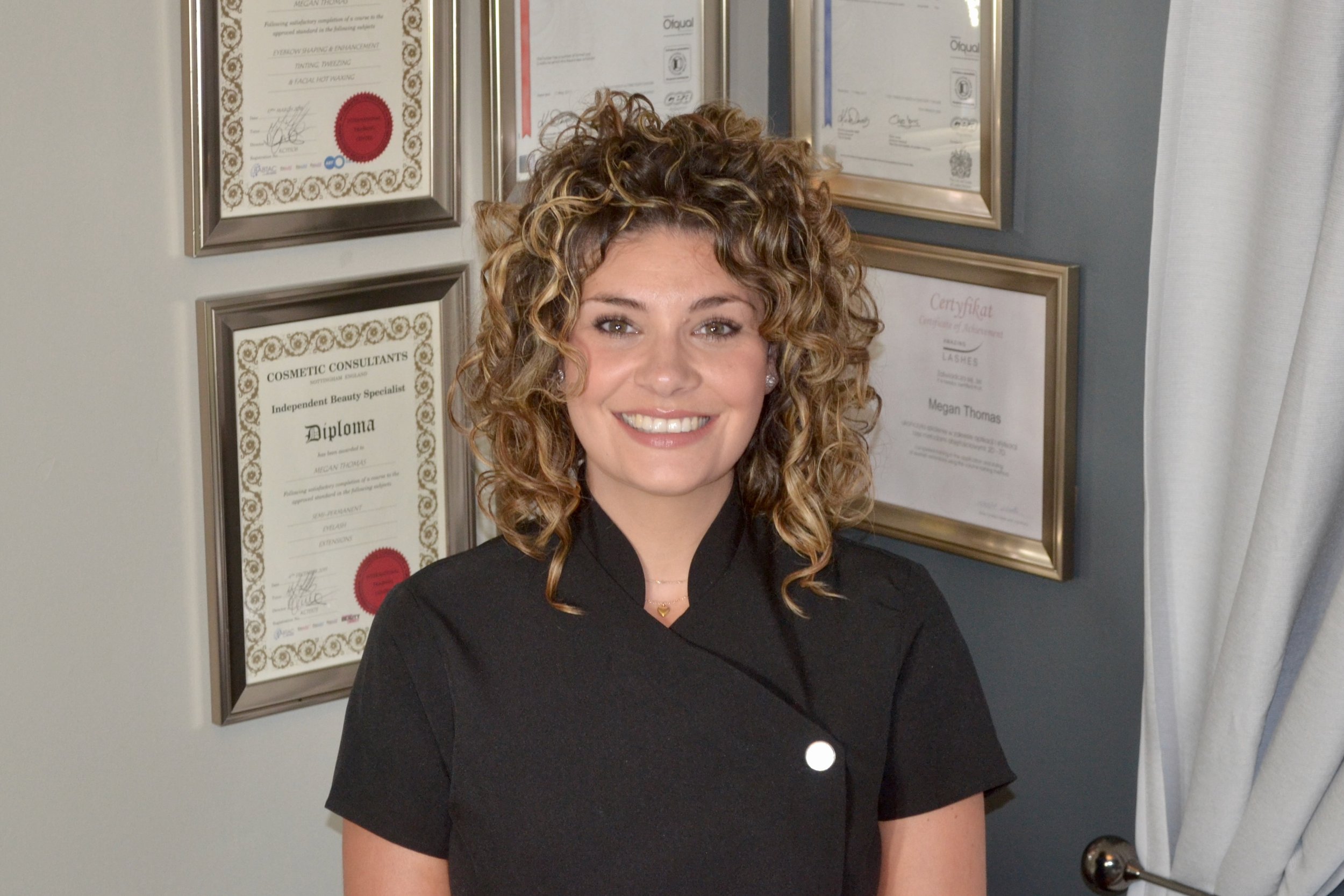Lash Training, Eyelash Extensions & Professional Lash Supplies
ABT-accredited academy offering one-to-one lash training in Derby, Maidstone and Nottingham. Shop pro lash supplies or book 5★ lash and brow treatments - all in one place with expert trainer Megan Thomas.
Why Students & Clients Trust Megan Thomas Lash Academy
Become a Certfied Lash and Brow Technician
-

Straight to Volume
Skip the basics and fast-track your career with our Straight to Volume Course, designed for ambitious learners ready to master advanced techniques from day one. This one-to-one ABT-accredited training gives you the precision, skill, and confidence to deliver high-impact lash sets that clients love.
-

Classic Eyelash Extensions
Our Classic Lash Course is the perfect starting point for beginners who want to build a solid foundation. Learn the art of applying individual extensions, gain hands-on practice with live models, and leave with an ABT-recognised qualification plus a full kit to kickstart your lash journey.
-

Brow Lamination
Add one of the most in-demand beauty treatments to your menu with our Brow Lamination Course. Learn how to sculpt, set, and style brows for a fuller, defined look clients can’t resist. This course covers mapping, tinting, and aftercare so you can offer a professional service straight away.
-

Lash Lift and Tint
The Lash Lift & Tint Course is perfect for students wanting to enhance natural lashes without extensions. You’ll master lifting, curling, and tinting techniques that give clients a low-maintenance, eye-opening look. Delivered face-to-face with full tutor support, this course helps you add a high-profit treatment to your business.
Ready to master one of the most in-demand beauty treatments? Our ABT-accredited Brow Lamination Course teaches you how to sculpt, set, and style brows for a fuller, defined look your clients will love. This hands-on, face-to-face training is perfect for beginners or beauty pros ready to add a high-profit service to their menu. Learn the art of brow mapping, tinting, styling, and aftercare with expert guidance—confidence guaranteed.
Book now and elevate your brow game.
Clearance Lash Stock – Limited Stock, Lowest Prices
Shop our clearance section for professional lash supplies at unbeatable prices. Featuring lash trays, adhesives, tools, and accessories, this stock is limited and will not be restocked. The same high-quality products trusted by lash artists, now available at a fraction of the price. Perfect for stocking up while saving money — once they’re gone, they’re gone.
Behind the Lashes – News, Awards & Expert Advice
Follow Megan Thomas Lashes on social
At Megan Thomas Lash Academy, you’ll benefit from the expertise of Megan Thomas, a seasoned professional in the eyelash industry. Megan’s passion for beauty and commitment to excellence ensures you receive top-notch training and support. Whether you want to enhance your skills or start a new career, Megan’s personalised approach and hands-on guidance will help you achieve your goals.
Enrolling in our courses is a seamless process designed to get you started on your journey with ease. Visit our enrolment page, choose your preferred course and location, and complete the registration form. Our dedicated team is here to assist you every step of the way, ensuring a smooth and hassle-free enrolment experience. Join us today and take the first step towards mastering the art of eyelash extensions.
Eyelash Extensions, Lash Lift and Brow Laminations Treatments:
-
Experience the timeless elegance of our Classic Eyelash Treatment. This service enhances natural lashes with a sophisticated look, adding length and subtle volume. Our expert technicians ensure a meticulous application for a flawless finish, perfect for those seeking refined and effortless beauty enhancement. Book your appointment today and discover the allure of beautifully extended lashes that complement your everyday style.
-
Elevate your look with our Russian Volume Lashes, the ultimate choice for those seeking dramatic, full-bodied lashes. This advanced technique involves applying multiple ultra-fine extensions to each natural lash, creating a voluminous, fluffy effect without compromising comfort. Perfect for special occasions or everyday glamour, our expert technicians meticulously craft these lashes to enhance your natural beauty, providing a bold yet sophisticated finish. Book your appointment today and transform your lashes with the luxurious fullness of Russian Volume Lashes.
-
Achieve the perfect balance with our Hybrid Lashes, combining the best of both worlds from Classic and Russian Volume techniques. This style blends individual extensions with light-volume fans, creating a fuller, more textured look while maintaining a natural appearance. Our Hybrid Lashes offer versatility and beauty and are ideal for those seeking added depth and dimension without the full drama of volume lashes. Let our skilled technicians craft a bespoke lash look tailored to enhance your features. Book your appointment today for stunning, multidimensional lashes.
-
Enhance your natural beauty with our Lash Lift and Tint, a treatment designed to lift, curl, and darken your lashes, giving you a wide-eyed, polished look without the need for extensions. This low-maintenance solution provides a stunning, long-lasting curl and rich colour, perfect for those who prefer a more natural aesthetic. Our experienced technicians ensure precise application for beautiful, evenly lifted lashes that open up your eyes. Book your appointment today to experience the effortless elegance of lifted and tinted lashes.
-
Achieve perfectly sculpted brows with our Brow Lamination treatment, designed to enhance the natural shape and create a fuller, more defined look. This advanced technique smooths and sets brow hairs in place, giving them a lifted, uniform appearance that lasts for weeks. Ideal for those looking to tame unruly brows or achieve a sleek, polished finish, our expert technicians meticulously shape and style each brow for a flawless, symmetrical result.
Perfect for both a natural or bold look, Brow Lamination is the ultimate solution for effortless, well-groomed brows. Book your appointment today and discover the beauty of perfectly lifted and styled brows.
Get in touch.
We’re always happy to help! Whether you’re unsure about a course, need product advice, or just want to chat through your options, we’d love to hear from you. There’s no such thing as a silly question – just reach out and we’ll take care of the rest.






